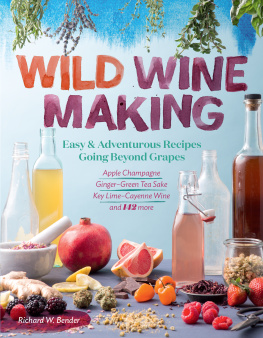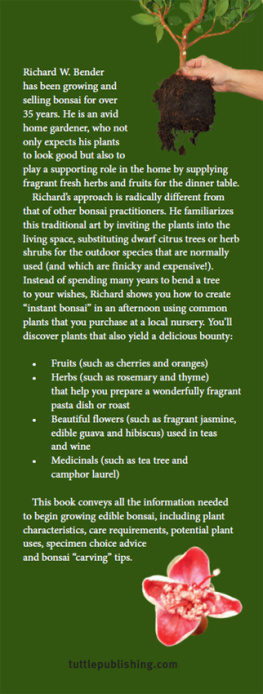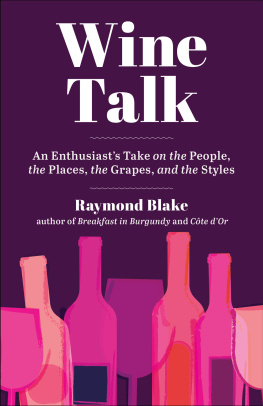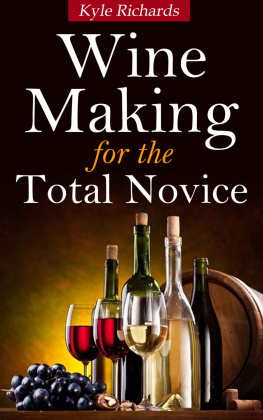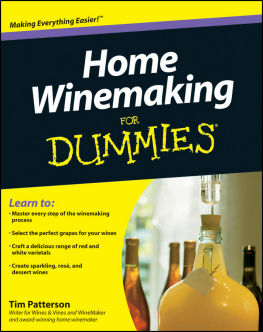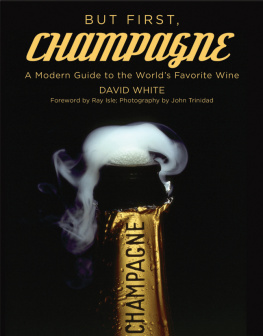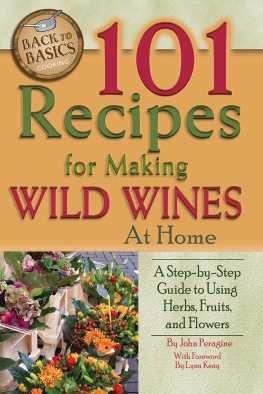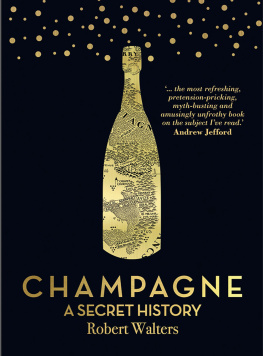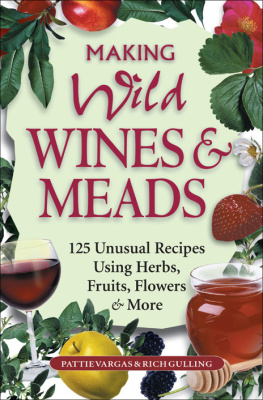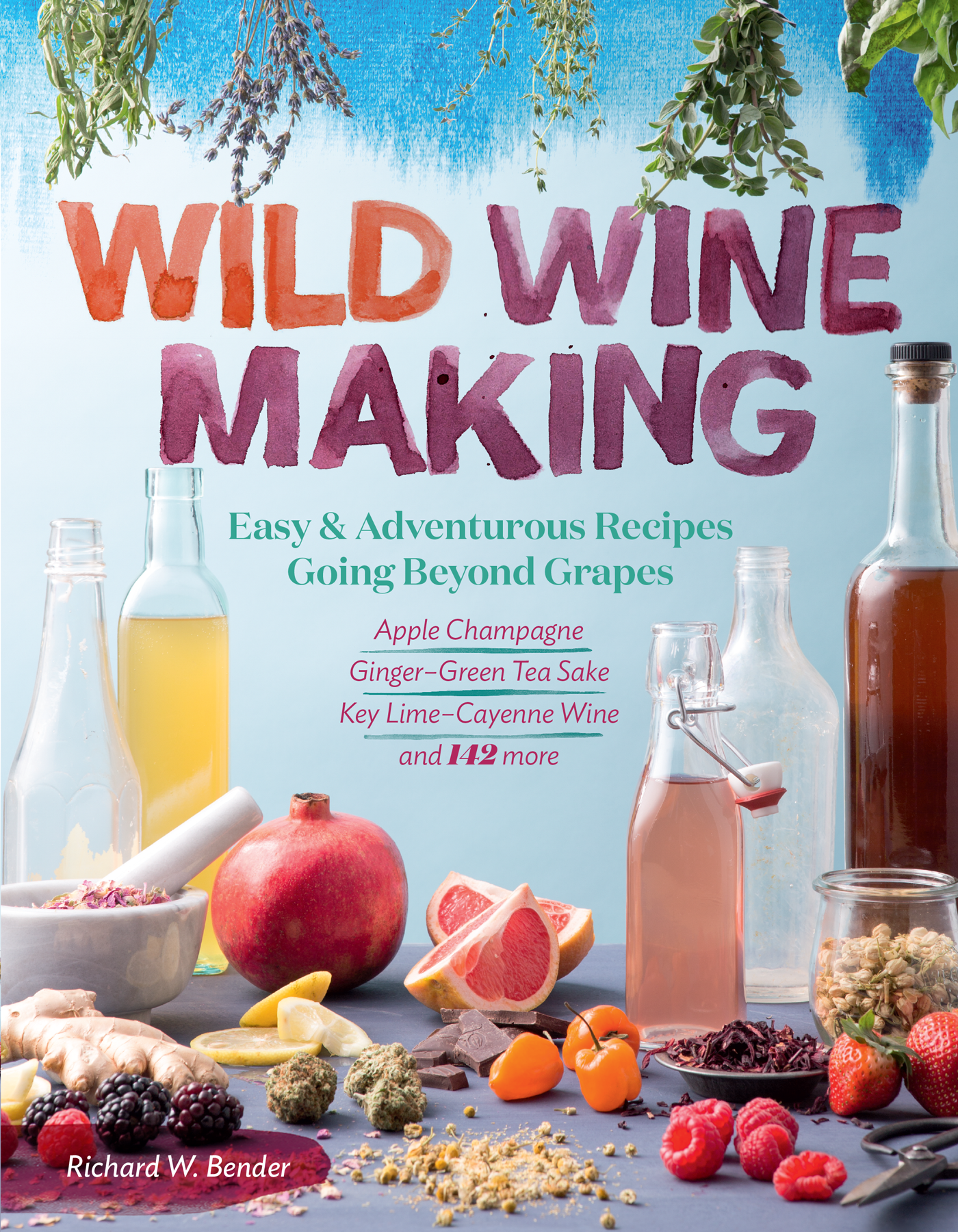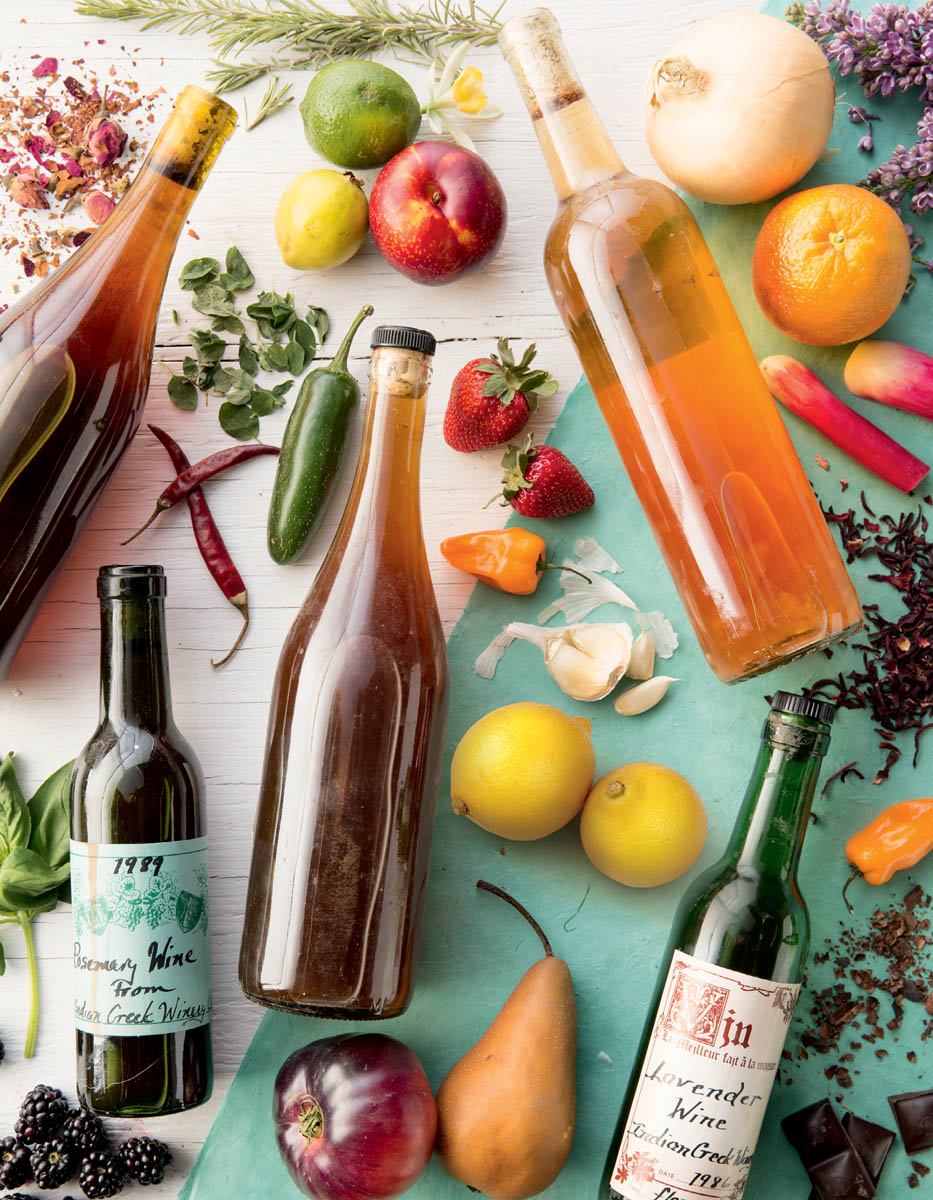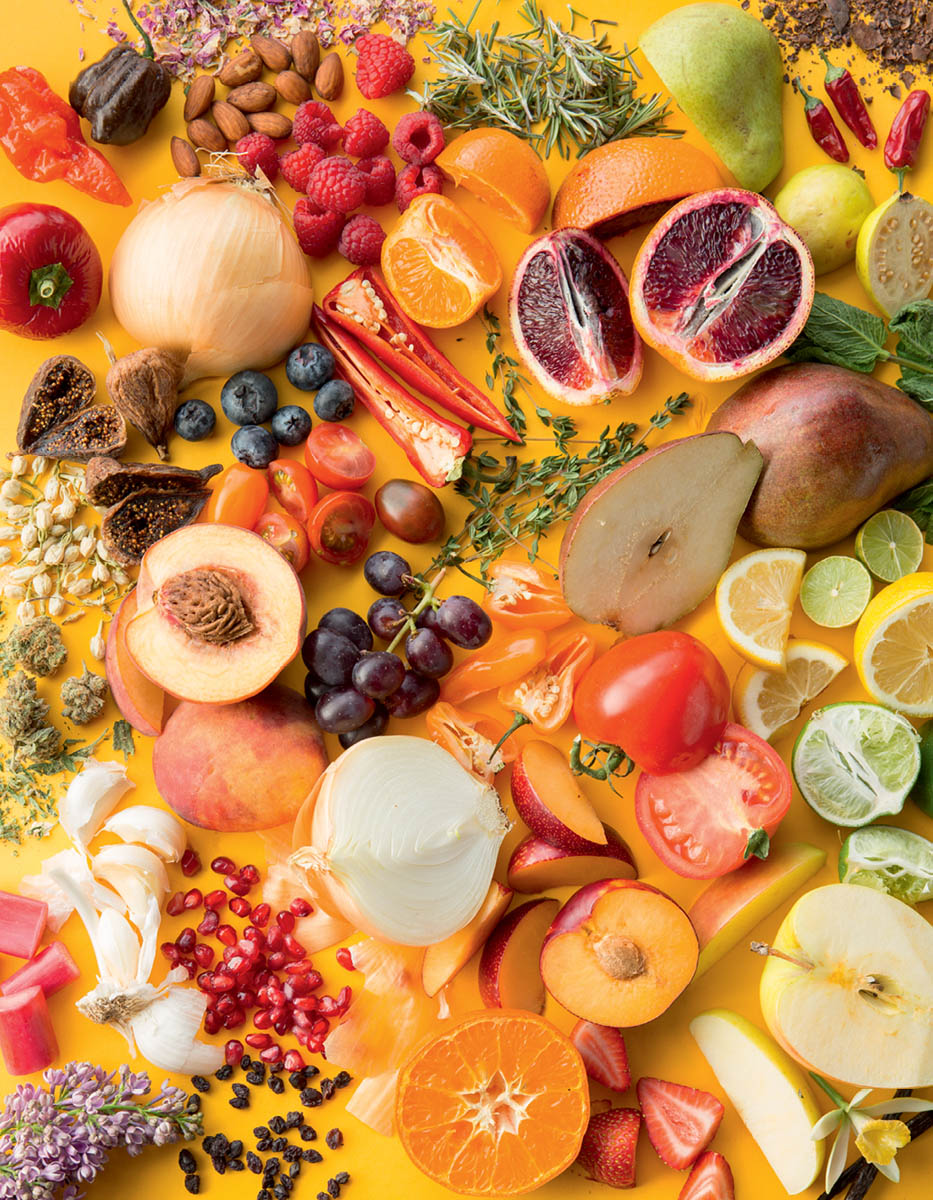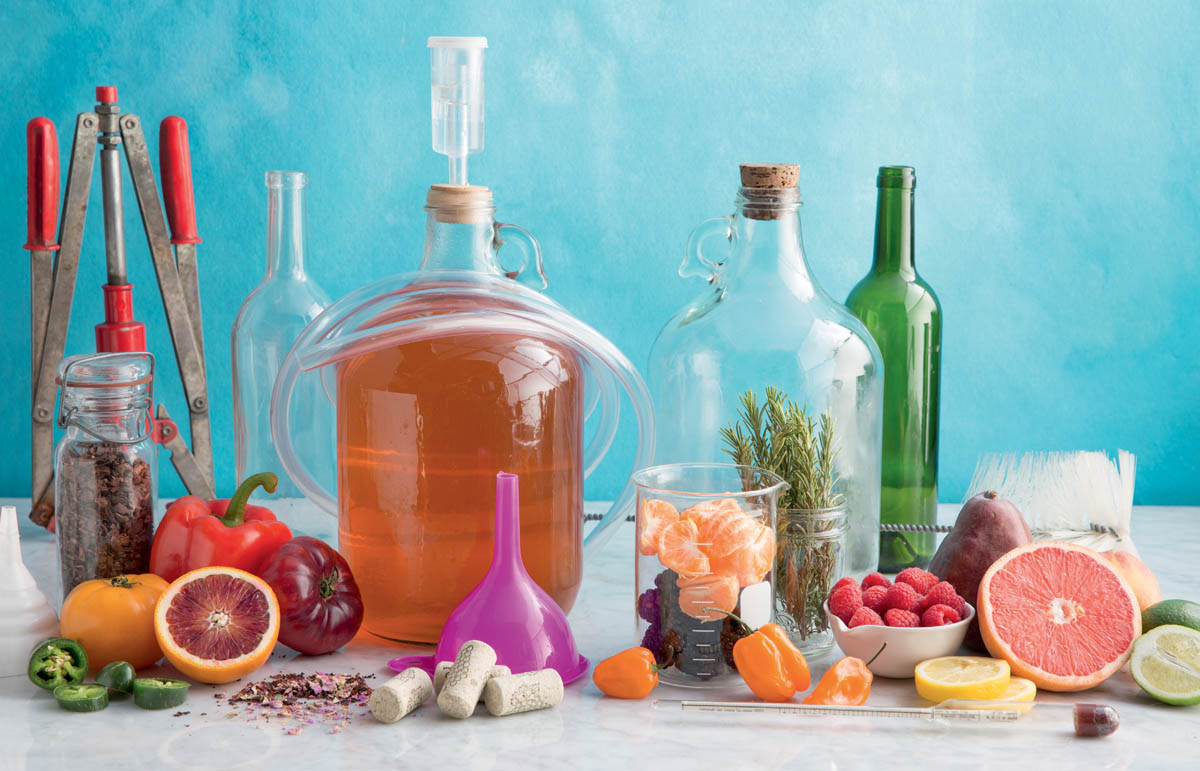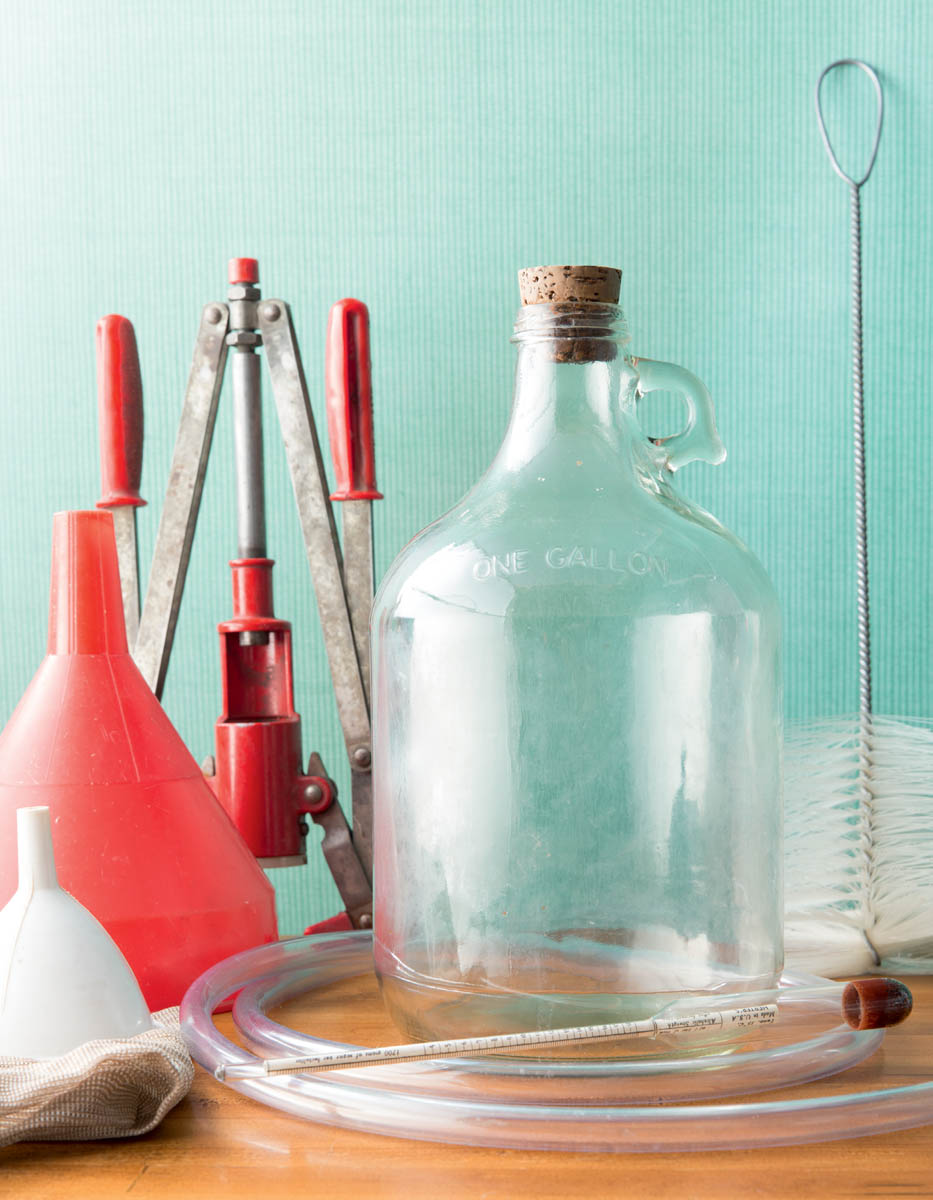Dedication
To all the friends who have tasted and enjoyed my wines through the years, especially those who contributed ingredients or helped me make them, and to all those people willing to step out of the box and dive into Wild Winemaking
Contents
Chapter 1:
Chapter 2:
Chapter 3:
Chapter 4:
Chapter 5:
Chapter 6:
Chapter 7:
Preface
Winemaking doesnt need to be complicated and intimidating, the way it is often presented.
I grew up in Missouri hunting, fishing, and collecting mushrooms, blackberries, mulberries, persimmons, and anything else we could find in the wild. My family also had a large garden. My mother canned, froze, and used much of the fresh produce in her cooking, and I sold the excess at a roadside stand in front of our house. I continued to garden as an adult and always used as much of our own homegrown produce as possible in my cooking. And I liked to experiment. One summer I made 30 different jams and jellies, including herbal jellies and wild sumac berry jelly. I was always looking for unusual and unique ingredients to use in my kitchen.
I discovered that I liked wine during college, when a friend introduced me to a cheap wine that was popular on campus those days: Boone's Farm Strawberry Hill. I eventually graduated to higher-quality sweet German white wines, such as Sptlese and Eiswein (ice wine), but I never thought about making my own wines until about a dozen years after I graduated from college, when I found myself back in my college town with 13 cherry trees in my yard and an abundance of cherries to pick. I could have made enough cherry jam to last a decade from that one harvest. Not wanting that much jam, but also not wanting the fresh cherries to go to waste, I asked my friends if they wanted some of the fruits. One friend said that he wanted to make cherry wine, so I picked him a 5-gallon bucket of cherries.
That Christmas my friend gave me a bottle of the wine he had made. It tasted pretty good, and I knew right then that I wanted to learn how to make it. I bought a home winemaking book and devoured it, eager to start making my own wine.
The next summer I made my first batch of wine using a bucket of my cherries. I learned a lot from that process (one lesson being that you need to use fermentation locks, not balloons, to seal your jugs if you don't want broken jugs and a wine-splattered room), but I was proud of that first cherry wine. It was good and had a nice cherry flavor. After that, I started looking around, wondering what other fruits I could use to make wine. They werent hard to find. Friends who were growing apples and plums offered me fruit in exchange for some of the wine I could make from it, so apple and plum wines came next. I also made a very large batch of Bing cherry wine after a friend who was the produce manager at a local store gave me a pallet of slightly bruised cherries that were not suitable to sell because of their appearance but still made good wine. It filled most of my carboys and gallon jugs. I made a delicious lavender wine from fresh French lavender blossoms. Soon I was expanding my winemaking horizons beyond fruits and flowers to include vegetables and herbs.
The wines in this book are unique, and the special winemaking techniques I have developed are not found in more traditional winemaking books. For instance, I use whole fruits, not juice, and add sugar in stages if making larger batches.
Sugar is essential to the winemaking process, serving as food for the yeast that drives the fermentation. Grapes usually have enough natural sugar that you dont need to add any sugar to the ferment to convert them to wine. But most nongrape wines need some added sugar, and flower and herb wines need plenty of extra sugar. When making all cannabis wines and 5-gallon batches of wine, I add sugar at several intervals during the primary fermentation so as not to overwhelm the yeast, which could stop the fermentation or even kill the yeast. By adding a lot of sugar, and not bothering to measure specific gravity, I create wines with a high alcohol content (roughly 14 to 18 percent, compared to 10 to 11 percent for typical commercial grape wine), which, by happy accident, turns out to have many benefits.
Like most people, I had learned early on that drinking wine could lead to hangovers and headaches the next day. When I found out that sulfites might be the culprit (though more recent research has questioned this), I resolved to stop adding them or any other chemicals to my wines. Because my wines have a high alcohol content, they are still able to be preserved without sulfites, aging more like hard liquors than typical wines. And because I make my wines from whole fruits, instead of just the juice, they contain important antioxidants and other nutrients.
Perhaps my greatest pleasure in making wine is sharing it with friends. I invite friends for dinner and pair my wine with the food, and I use wine in my cooking. It wasnt long after I first began making wine that my friends started commenting on how much they liked my wines, and how amazed they were by the unique qualities of the more unusual varieties. Over the years, many people have suggested that I write a book about my uncommon wines. After writing two gardening books, I decided that this books time had come.
Winemaking doesnt need to be complicated and intimidating, the way it is often presented. You dont need to plant a vineyard to make wines. Many ingredients can be gathered for free or can be easily grown in a summer garden. If you are a wine lover, I encourage you to make your own wines. Perhaps we can meet and share our wines with each other someday.
Richard W. Bender
Part 1
Getting Started
Chapter 1
Equipment & Supplies
It may seem daunting to look at the online catalog of any large winemaking supply company. There are a lot of tools and equipment, and picking out what you need could seem like a complicated process. But in truth, you really just need a few basic things. People, after all, were making wine long before things like electronic filters, pH meters, and temperature-control equipment were available.
Equipment
Fermentation is a natural process. With a minimum of equipment and a little experience, it is possible to make wine as good as or even better than anything you can purchase.
Primary Fermentation Vessel

